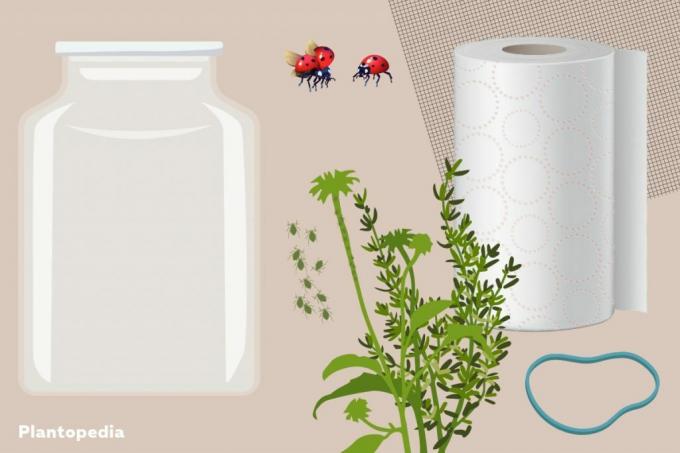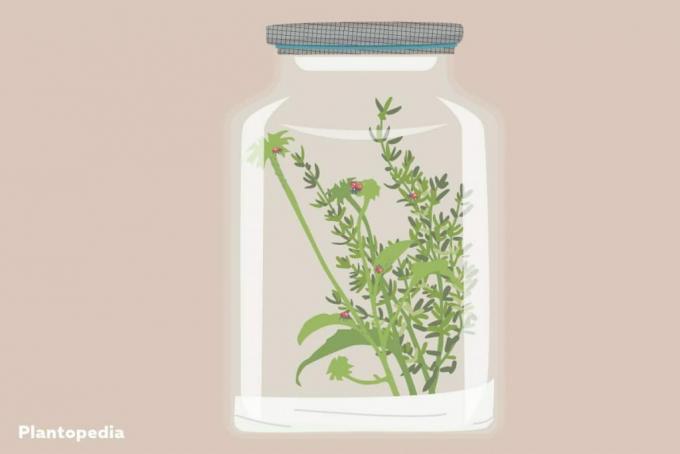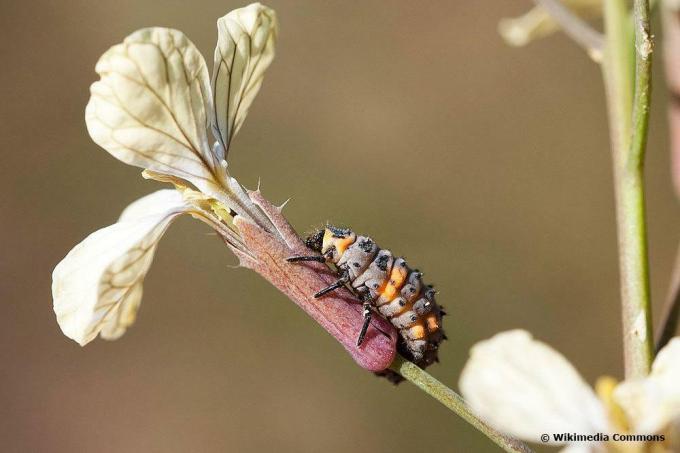
table of contents
- Ladybug in the garden
- The vivarium
- Breeding ladybugs - instructions
- The preparation
- The assembly
- The closing
- The grooming
- The wait
- frequently asked Questions
With our tips you can observe the development of the ladybug from larva to adult ladybug. The little lucky charms then fly through your garden. We show you how to breed ladybugs yourself.
In a nutshell
- Insects are welcome in the garden
- Beetles mainly feed on aphids and spider mites
- breed beetles yourself with an insect oasis
- The beetle larvae hatch 5-8 days after mating
- pupation after 1-2 months
Ladybug in the garden
Approx. 70 different species of ladybugs. For gardeners, these serve a special purpose. The little beetles love aphids and spider mites. A single beetle eats over 100 lice a day. For this reason, many gardeners ask themselves whether they can breed ladybugs to protect them from pests.
The vivarium
The vivarium is the focus of rearing. You can choose to build the living space yourself or buy a finished product. Independent construction is possible with the following materials:
- Glass (capacity min. 1 liter)
- Insect net
- Ladybug
- Plants and aphids
- Elastic band
- Kitchen paper

Breeding ladybugs - instructions
If you want to breed ladybugs to larva step by step, you can use the following instructions. It is equally exciting for children and adults to observe the development from small larvae to fully grown insects.
The preparation
First of all, prepare the place of residence for the insects. At a self-made insect oasis, take the glass and lay out the floor. With folded crepe paper, you ensure that a little moisture always stays inside the glass.
Note: The preparation for rearing insects should be done in spring. March and April are suitable months.
The assembly
To populate the vivarium, you will need three things: aphids, plants and ladybugs. The lice multiply very strongly in spring. Infested parts of plants are often found in the home or the surrounding area. Take the leaves and put them in the glass. The beetles can be found near foliage and dense undergrowth. Be sure to carefully place both male and female specimens in the jar.
Note: As an alternative, you can collect the insect larvae from leaves or tree trunks from May onwards.
The closing
In the next step you can close the jar. Use the insect net for this, which you attach with a rubber band. In this way you prevent the beetles from escaping again and also ensure the air supply.

Tip: The location should be warm. Direct exposure to the sun is not recommended.
The grooming
The insects in the glass need food. Make sure that you regularly add lice infested parts of the plant to the jar. In addition, it is necessary to moisten the insect oasis in order to offer the beetles optimal living conditions.
The wait
Following mating, the female lays eggs on the plant leaves. The larvae hatch within the next 5-8 days. They pupate 1-2 months later. During the development into a pupa, the larva sheds its skin several times. The growth is uneven. Then the ladybugs hatch and you can put them out in the garden. The development time depends on the humidity and temperature in the glass. A few hours after hatching, the beetles acquire their typical color.
Note: After the insect larvae hatch, the need for food increases. Provide them with enough aphids, otherwise they will eat each other.

frequently asked Questions
Those who breed the little beetles themselves hardly want to endanger them. However, there are some enemies in the garden at home. The increasingly widespread Asian counterparts make life more difficult for the domestic beetles. Ants are also natural enemies.
If you don't want to breed the beetles yourself, you can attract them with the right plants. Certain plants are predestined for colonization. If you have the following plants in your garden, insects will quickly fly to you:
- garlic (Allium sativum)
- Dill (Anethum graveolens)
- Coriander (Coriandrum sativum)
- Fennel (Foeniculum vulgare)
- Mint (Mentha)
- cornflower (Centaurea cyanus)
The larvae of the insects are very hungry. Depending on the species, there are up to 3000 lice or spider mites on the menu. Hence its popularity with gardeners and in agriculture.
The path from larva to fully formed beetle can take up to a year. Usually the insects hibernate once. Some specimens live longer and last a second winter.
